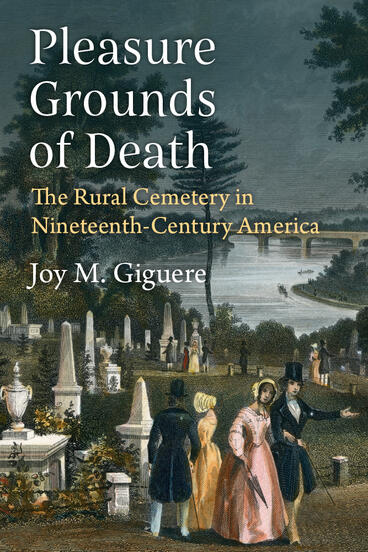Pleasure Grounds of Death
The Rural Cemetery in Nineteenth-Century America
Revealing how landscapes dedicated to the perpetual care of the dead mirrored the transformations and conflicts of the nineteenth century in American society
Description
Rural cemeteries—named for their expansive, picturesque landscape design rather than location—were established during the middle decades of the nineteenth century in the United States. An instant cultural phenomenon, Mount Auburn Cemetery in Cambridge, Massachusetts, was the nation’s first such burial ground to combine the functions of the public park and the cemetery, becoming a popular place to picnic and go for strolls even for people who didn’t have graves to visit. It sparked a nationwide movement in which communities sought to establish their own cities of the dead.
Pleasure Grounds of Death considers the history of the rural cemetery in the United States throughout the duration of the nineteenth century as not only a critical cultural institution embedded in the formation of community and national identities, but also as major sites of contest over matters of burial reform, taste and respectability, and public behavior; issues concerning race, class, and gender; conflicts over the burial of the Civil War dead and formation of postwar memory; and what constituted the most appropriate ways to structure the landscape of the dead in a modern and progressive society. As cultural landscapes that served the needs of the living as well as the dead, rural cemeteries offer a mirror for the transformations and conflicts taking place throughout the nineteenth century in American society.
Joy M. Giguere is Associate Professor of History at Penn State York.
Reviews
“Pleasure Grounds of Death is beautifully written and deeply researched. It explores not just how people were supposed to use rural cemeteries but also how they actually behaved when they visited. The resulting argument that these spaces were sites of cultural contest makes this book of interest to those who study cemeteries and to anyone interested in the social and cultural history of the nineteenth-century United States.”
- Erik R. Seeman, author of Speaking with the Dead in Early America
“Pleasure Grounds of Death lives up to its arresting title. It is an engaging, deeply researched book that covers a great deal of ground on an important topic. It is a pleasure to follow the rise and evolution of the rural cemetery phenomenon through Giguere’s frame.”
- Ryan Smith, author of Death and Rebirth in a Southern City
“In Pleasure Grounds of Death, Joy Giguere presents a comprehensive history of the rural cemetery, a progenitor of the modern American way of death. In fascinating detail, she creates an evocative vision of the origins, development, and mature creation of a new American cemetery. While 21st century Americans live in a very different age, Giguere demonstrates that we still live with the issues of life and death, pandemic and infant mortality that drove 19th century Americans to imagine a new style of burial place. A must-read for those interested in the history of burial places as well as anyone intrigued by 19th century American culture and society.”
- David C. Sloane, author of Is the Cemetery Dead? Mourning and Commemoration in the 21st Century

